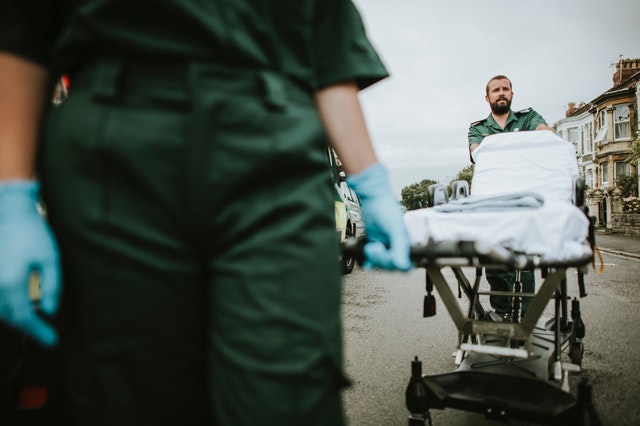Before or After Weight Loss Surgery: What Happens in an Emergency?

Photo by rawpixel.com from Pexels
Before or After Weight Loss Surgery: What Happens in an Emergency?
Comorbid conditions exist with morbid obesity. That is just scientific fact. Diabetes, heart conditions, liver conditions, and other complications have been proven to be linked with morbid obesity. While every person is different in their body type, all it takes is the wrong type of stress or circumstance and suddenly they are having a heart attack or a stroke. So, what happens if you are just out of weight loss surgery and you get a heart attack? Is there any sort of special procedure? Are there any special requirements for obese patients? Let’s find out.
What are Emergency Services?
When someone calls 911, the first responders are going to be ones to answer that call. But while we know for the most part that there are some services that are put in place by national law, the state, sometimes even the county is responsible for what division answers to what emergency. Simply put, your location determines who responds to your emergency needs. For the most part, the call center for the area, the fire department and the emergency services that are part of the local hospitals usually take care of emergency services. However, there might be different rules depending on where the emergency happens and what they are able to cover.
There is also the nature of the emergency that determines who can and can’t respond. For instance, firefighters have enough emergency medical training to handle something like CPR, while ambulances have special equipment to transfer a person to the hospital. But what if they are in a situation where they can’t do the work alone? What if, for example, a heart attack happens to someone who has yet to go through weight loss surgery? Is there a limit to the equipment or protocol they have for emergency services?
How First Responders Handle Morbid Obesity
There is a limit for most standard equipment when it comes to emergency services. After all, every material, natural or man-made, has a limit to how much pressure or stress it can take. In the case of emergency equipment, most of them can withstand more weight than the human body can sustain. The average weight for someone with average height to be considered morbidly obese is at 300 lbs. However, the equipment can withstand at the very least 500 lbs.
Most people that live with this level of morbid obesity are a rare statistic. However, there are no official numbers that are recorded that we know of that weigh past 600 lbs. The best guess most people have a range of 1-5 percent of the American population. We don’t know for sure because a lot of those people are homebound, and are less likely to report their own weight themselves out of shame. But the rate of obesity in adults are is consistently growing, enough so that we have television shows dedicated to the subject matter. So, there is an ever-looming logistical problem that EMT’s and their equipment are facing. And the only way they can face it is to come up with a new protocol for such situations.
Protocol for Extreme Obesity for EMS Providers
The typical protocol for emergency medical services include:
- You should not move a patient that weighs over 300 lbs without at least four individuals to assist.
- For every 50 to 100 pounds more than 300 pounds, add another provider to assist in safe lifting and movement of the patient.
- If the patient needs removal, consider what hospital is appropriate for transport. Some hospitals have special bariatric services and equipment (extra-large CT scan).
- Respect for the patient’s privacy and feelings will match the respect for all EMS patients.
There is more protocol available for trained medical responders. The specialized equipment for these situations is can withstand a higher weight limit. But people, without the sheer force of numbers, can’t get any stronger. So, if you were to need relocation to a hospital, there is a strong chance that there would be a need for more people to assist. They also stress the importance of patient privacy, and if they can’t find a gown that fits, they will add on sheets and blankets to help.
They take all these steps because they don’t want to injure their patient. In fact, just recognizing and addressing equipment problems and the special circumstances involved with excess weight helped one EMS team decrease cot related injury by 100% within four years.